Aging out: The fate of abandoned Filipino children who don’t get adopted
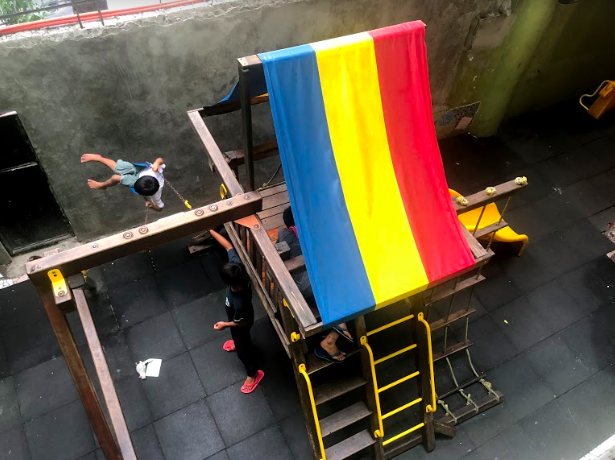
Image: courtesy of Gentle Hands
A bright orange home breaks the monotony of the houses lining F. Castillo Street in Cubao, and one can hear the perked voices of children from inside, muffled only by the closed front door during lunch hour.
Jason’s Home, as it is called, is one of the residential care facilities of child and youth welfare agency Gentle Hands, Inc. for children of all ages in need of special protection. Charity Heppner Graff, executive director of Gentle Hands, came to the Philippines in 2000 with her husband to continue the work her missionary parents started with the center in the 1990s. Initially a birthing clinic, the center refocused its services and became licensed and registered with the Department of Social Welfare and Development as a home for orphaned, neglected and abandoned children in 2003.
“I did not believe in adoption and I did not believe in orphanages, and then we realized the more children we got, we needed something to do with them,” said Graff.

Image: courtesy of Gentle Hands
More than 50% of the children in Gentle Hands are foundlings, or children who were deserted or abandoned and whose parents and relatives are unknown. According to Graff, there is a small amount of interest in adoption locally and the ones who do get adopted are generally aged 0 to 2 years old.
Reflecting on the current state of adoption at Gentle Hands, Graff admitted that they are in a crisis.
Article continues after this advertisement“Adoption is slow right now. We’ve never been in this situation in all of the 17 years that we’ve been doing this. We have a lot of children that are 13, 14, 15 [years old] — they’re gonna age out,” admitted Graff.
Article continues after this advertisement“We don’t have enough adoptive families anymore, the process is too slow, so our children are aging out while their papers are being prepared by the DSWD,” she explained. “The system is damning the children.”
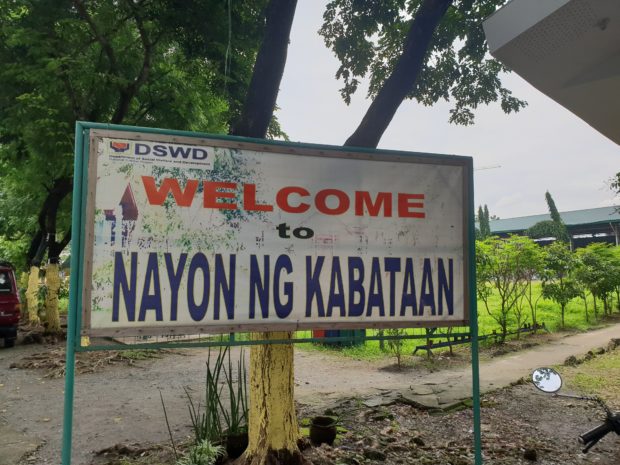
Image: courtesy of Nayon ng Kabataan
A bias for adopting younger children?
Jaymie Rose Bongco has only seen one successful adoption in her four years working as a social worker in Nayon ng Kabataan in Mandaluyong City. That was in 2017. She estimates there are about 129 children in the facility’s care today, around 20 of whom are being petitioned for the issuance of a certification so they can be declared legally available for adoption by DSWD.
Social workers have three months to exhaust all possible efforts to locate a child’s parents or family members. They conduct home visits and send out mails with return cards to the last known address of the child’s parents; secure police reports or barangay certifications from the locality where the child was found; and reach out to newspapers and radio stations for announcements. Filing for a petition is their last resort — when all efforts have proved fruitless.
“Kung wala talagang nangyari tapos nakapag newspaper publication na kami, nakapag radio announcement na kami na ‘yung bata nasa amin at ‘yung mga relatives ay pwede pumunta dito, sinasabi na namin sa kanila ‘yun ‘pag gagawin na namin ‘yung petition,” said Bongco.
(If nothing still happens after we have published in a newspaper and announced through radio that the child is with us, and the relatives can come to us, we tell them when we are about to make the petition.)
Being declared legally available for adoption, however, is just the first step. The matching of children to prospective adoptive parents can take a long time, months and even years. For the older children, they also have to face the possibility of aging out of the system and never getting adopted.
The reality is different in the Reception and Study Center for Children (RSCC) in Quezon City, another child-caring facility under the DSWD. Unlike Nayon ng Kabataan which caters to children aged 7 to 17 years old, RSCC only takes in children aged 0 to 6 years old.
“Mas maraming na-a-adopt sa RSCC kung titignan natin ‘yung mga infant, lalo na ‘yung mga locally adopted na mga bata, mas marami sa kanila,” said Bongco. “When it comes dito sa center namin, since dumating ako dito, marami kaming for matching, marami kaming for adoption, pero isa pa lang ‘yung napa-adopt talaga successfully namin at inter-country pa namin ‘yan.”
(More get adopted from RSCC if we look at the infants, especially the locally adopted children, there are more. In out center, since I arrived here, we have a lot of kids for matching and for adoption, but only one has been adopted successfully, and that was even inter-country.)
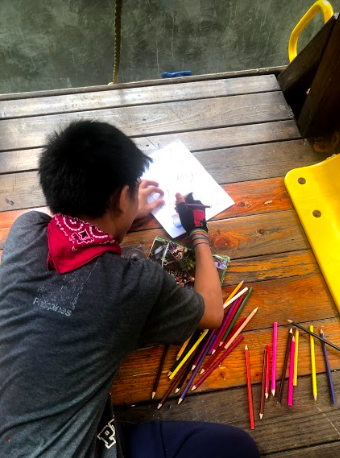
Image: courtesy of Gentle Hands
Bongco surmised this may be due to some adoptive parents who personally want to have a hand in rearing the child themselves.
“Kasi nga naman ‘yung mga bata namin ay meron na talagang isip, meron nang experiences,” she said. “Pero thankful kami na meron parents pa din na nagta-try mag reach out kung sino ‘yung pwede nila i-adopt.”
(That is because our kids of course already have minds of their own, they already have experiences. But we are still thankful for parents who still try to reach out and see who they can adopt.)
The Inter-Country Adoption Board, which was created with the passage of Republic Act No. 8043 or the Inter-Country Adoption Act of 1995, stands as the central authority in matters relating to inter-country adoption. But inter-country adoption, too, is considered as the last resort. As per R.A. 8043, ICAB must set up guidelines to ensure that steps will be taken to place a child in the Philippines before they can be placed for inter-country adoption.
Lanie Fowler, the social services manager of child-caring non-governmental organization Virlanie Foundation in Makati City, said that social workers and the DSWD matching committee painstakingly take efforts to place a child in a Filipino family. There is usually less adjustment for the child when placed in a Filipino family, but Fowler shared that this does not always work out since some Filipinos are somewhat finicky and do not want older children.
“[There is less] adjustment, but if there’s no available family, the matching committee would issue a certificate certifying that there’s no family available to the child,” Fowler said. “She will be endorsed now to the central office of DSWD to be issued with inter-country adoption clearance.”
The child would then be placed in the roster of approved families in ICAB. What follows after is a timeframe nobody knows how long, depending on how many families are available to the child, how much time it would take for a social worker to select the best family for the child, and whether ICAB decides the match is good for the child.
“Inter-country adoption is from 3 years old to 15, maximum of 16, but less na ‘yung percentage [for them to be adopted]…” she said. “The dilemma, in fact, now, of older adoption is only American [families] [are] open to older adoption, no one else among the partner foreign agencies.”
Graff echoed the sentiments of Fowler, saying families who are accepting of older children are usually Americans. They are also more open when it comes to adopting sibling groups and children with special needs. Other countries are not.
“That’s generally because there’s a belief that the younger the child is, the less baggage they have, the less issues you have…” Graff said. “For older children, really, right now, all we have that’s really accepting older children and sibling groups are Americans.”
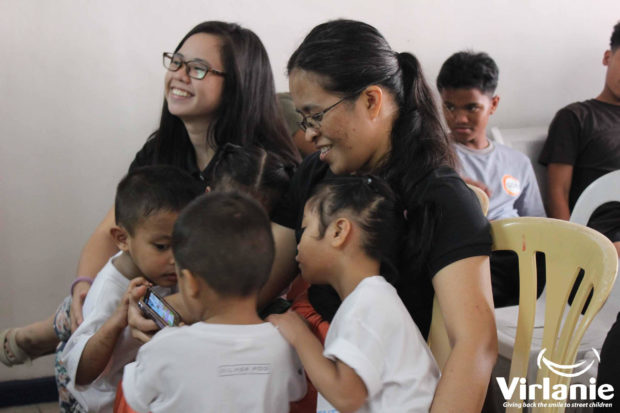
Image: courtesy of Virlanie Foundation
In Virlanie Foundation, 71 children have been adopted since 2005, but only 2 (one in 2016 and another in 2017) were domestic adoptions. Children who still have not been adopted at the age of 10 years old receive what Fowler calls a dual preparation from their social worker. This is done during their regular monthly counseling sessions as part of the child’s permanency plan.
“You might be adopted, so this would be the case, or you wouldn’t be adopted. Then let’s start preparing for the Independent Living Program… so the child can already think about, ‘What would I like to do in my life?’” she said. “Even if the child is still possible for adoption, at the age of 13, he or she would have to attend the various training seminars in the Independent Living Program, [to equip the child with] different life skills to prepare him towards independent living or towards adoption.”
Bongco also shared they are open in telling the children in Nayon ng Kabataan that they may not be adopted, so they explain to these children the possible alternatives they can pursue.
“Kasi tatlo lang naman po yan. Ma-a-adopt sila, ililipat namin sila ng center or mag-i-independent living po sila,” she said. “Or pang apat, kung lumabas yung pamilya nila at andiyan pa.”
(There are only three possibilities, really: that they be adopted, be transferred to another center, or live independently. Or, a fourth possibility is if their real family emerges.)
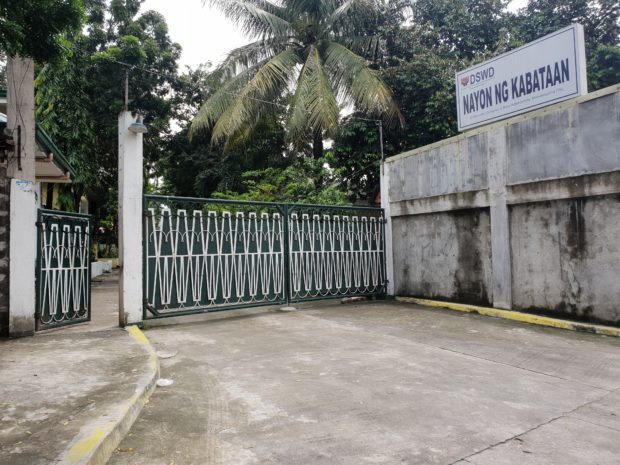
Image: courtesy of Nayon ng Kabataan
Preparations for independent living
Nayon ng Kabataan and Virlanie Foundation offer the Independent Living Program to their youth who may not get adopted. One of the social preparations the former gives its older children is making them undergo on-the-job trainings with partner agencies like Reyes Haircutters and Lions Clubs International, among others. They are also taught life skills, such as how to commute and manage their own finances. This goes on until such time that they are employed.
Bongco, however, said that most of the children in Nayon ng Kabataan do not get to attend college.
“Kapag pwede pa, kunyari yung age nila angkop dun sa grade level nila at wala silang pupuntahan na iba, usually ni-re-refer namin sa long-term residential care facility since ang NK ay temporary shelter lang,” she said.
(If it is still possible, for example, if their age is still appropriate with their grade levels and there is nowhere else the can go to, we usually refer them to a long-term residential care facility. This is because Nayon ng Kabataan is only a temporary shelter.)
Virlanie Foundation, on the other hand, avails of Makati’s Special Program for Employment of Students (SPES) for their young adults, so they would have summer jobs. They also have tie-ups with companies such as UNILAB where they place their young adults for training or assign those who are not yet ready for summer jobs in Virlanie Foundation as receptionists and carers.
The salary the young adults earn from their summer job is shared, with 25% going to their personal needs while the remaining 75% is saved so they would have money once they set out. The education of the children in Virlanie are supported by individual sponsors locally and abroad, so those who want to go to college and have the capability to do so are supported.
Once they turn 18 years old, they are encouraged to look for a boarding house, usually near their work station, or if studying, near their college, and be part of the community. Some of them work and study part-time, while others study full-time. It would depend, said Fowler, on their compliance to the program and their behavior.
“Virlanie has to support the tuition, has to support the boarding house, the food, the allowance,” said Fowler. “Or part-time, you have to work, then you have to pay for your boarding house. Virlanie has to pay for the tuition fee. It’s like a halfway home.”
Gentle Hands, meanwhile, is not looking into independent living or transfer for its older children. Graff does not believe in transfer and said that if they commit to a child, then they are committed to that child for life. Currently, she and her team are planning some kind of service, like a restaurant or a coffee shop, to give the older children who are not able to go to college a livelihood, such as those who have special needs.
Currently, Gentle Hands has at least 15 children who are around 14 to 16 years old. They can be on the adoption list until they are 15 years and 6 months old, said Graff, but by that time, they almost know nobody would adopt them.
“Nobody’s going to adopt them by 15 [years old], it’s going to hit really hard. We have about 15 [children] and they’re getting close, they’re getting close to age out… We are just really trying to decide how we’re gonna find sponsors to create this program because it’s not independent living, I’m not looking for independent living,” said Graff. “I’m looking for something that we can still care for them, be their support group, be their family, but give them some kind of income. Because they’re not all, really, at an intellectual stage where we could just say, ‘Okay, go live on your own and we’ll provide for you.’”
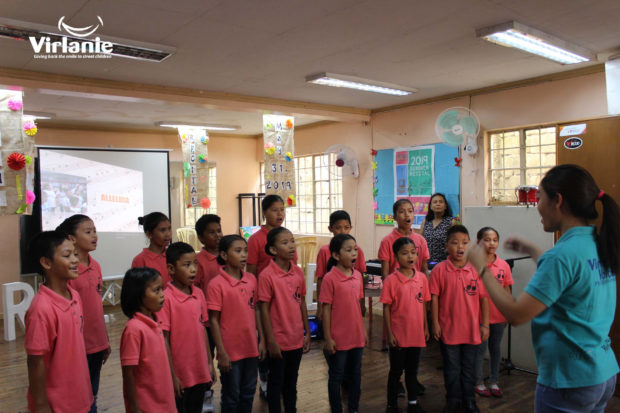
Image: courtesy of Virlanie Foundation
The case of children with special needs and terminal illnesses
Virlanie Foundation has two residential facilities for children with special needs in Makati City and Cavite City.The cases in these homes, according to Fowler, are stagnant due to slow movement, most of which have already been closed by ICAB since there were no families who signified to adopt the children.
“Movement of cases is one-is-to-10 years, one-is-to-15-years,” she said. “We are lucky enough to have two special children who were adopted, but they were younger. They were adopted by an American family, so that’s very lucky already, but most of them would stay in Virlanie lifetime.”
Their children with special needs, or at least those who are trainable, are being taught how to farm, garden and do the laundry — anything that would make them productive in the homes. But as Fowler pointed out, most of these children would stay with them until the end of their lives.
“That’s why you know, somehow, it’s part of the vision of Virlanie to have our own columbarium, kasi wala naman talaga silang uuwian (because they have nowhere to come home to),” she said. “That’s the hardest part, really. And the fear is, where are these children going? What is the end permanency plan for them? That’s really hard.”
This is also a problem in Nayon ng Kabataan, as Bongco said children with special needs are not really in their clientele category. The programs and services which should be given to them are different from those who are only socially deprived
“Marami kami ‘yung may special condition nga na beyond 18 years old na pero nandito pa rin sa center, na walang family, na hindi na na-adopt,” Bongco said.
(We have those who are beyond 18 years old with special conditions, and they are still here in the center, without families, having not been adopted.)
They usually refer children with special needs to Elsie Gaches Village (EGV), a center also under DSWD-NCR which caters to those who have special conditions. But EGV is already overcrowded, said Bongco, and are currently only admitting those with serious cases. Since their children with special needs are still manageable, Bongco said that their development might regress if transferred.
For them, the little things, such as seeing the children learn how to speak on their own, mingle with other kids in the center, and learn how to read and write although minimal, are already profound moments to celebrate.
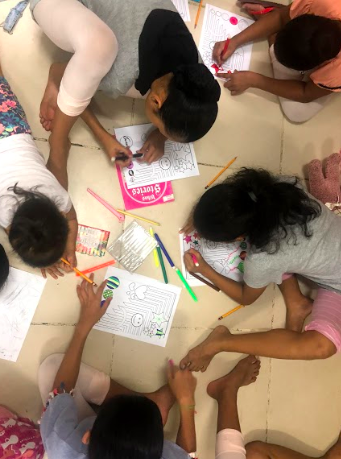
Image: courtesy of Gentle Hands
Passing away or living on
Gentle Hands, on the other hand, are involved with both children with special needs and terminal illnesses. They are difficult to handle and it is just as difficult to find people who can embrace them as they are.
Meanwhile, there are approximately 1.8 million “abandoned and neglected” children in the Philippines, as per the United Nations’ Children’s Rights and Emergency Relief Organization. Last February, President Rodrigo Duterte passed into law Republic Act No. 11222 or the Simulated Birth Rectification Act, which would help simplify the adoption process in the country. Data from the DSWD has shown that there are about 6,500 children who are available for adoption, 4,000 of whom are in the care of government and non-government residential facilities.
But the catch with data, it seems, is that it proves a fact as much as it blurs the faces it concerns.
In a year, about three or four children pass away in Gentle Hands, said Graff. But death is not something they keep from the children under their care.
“They know it. They understand it and I think our spirituality is a big help there because I think they know,” she said. “I think they’re not afraid of death. It’s part of what Gentle Hands has always been.”
Graff added she has always ended up being referred children who have terminal illnesses despite never setting up to do so.
“I have a 16-year-old in National Kidney [and Transplant] Institute who’s ready for discharge, but he’s not gonna live, he’s not gonna live more than a month… and there’s nobody who can take care of him,” she said.
“That’s a reality, it’s the reality in this country. We have orphaned children who are dying.” JB
RELATED STORIES:
A day in the life of two Bagong Silangan teachers
Mundong Mangyan: How Mindoro’s Alangan Mangyan face land disputes, lack of teachers, child marriages
‘All I want for Christmas is…’: Rounding up our readers’ Christmas 2019 wishes